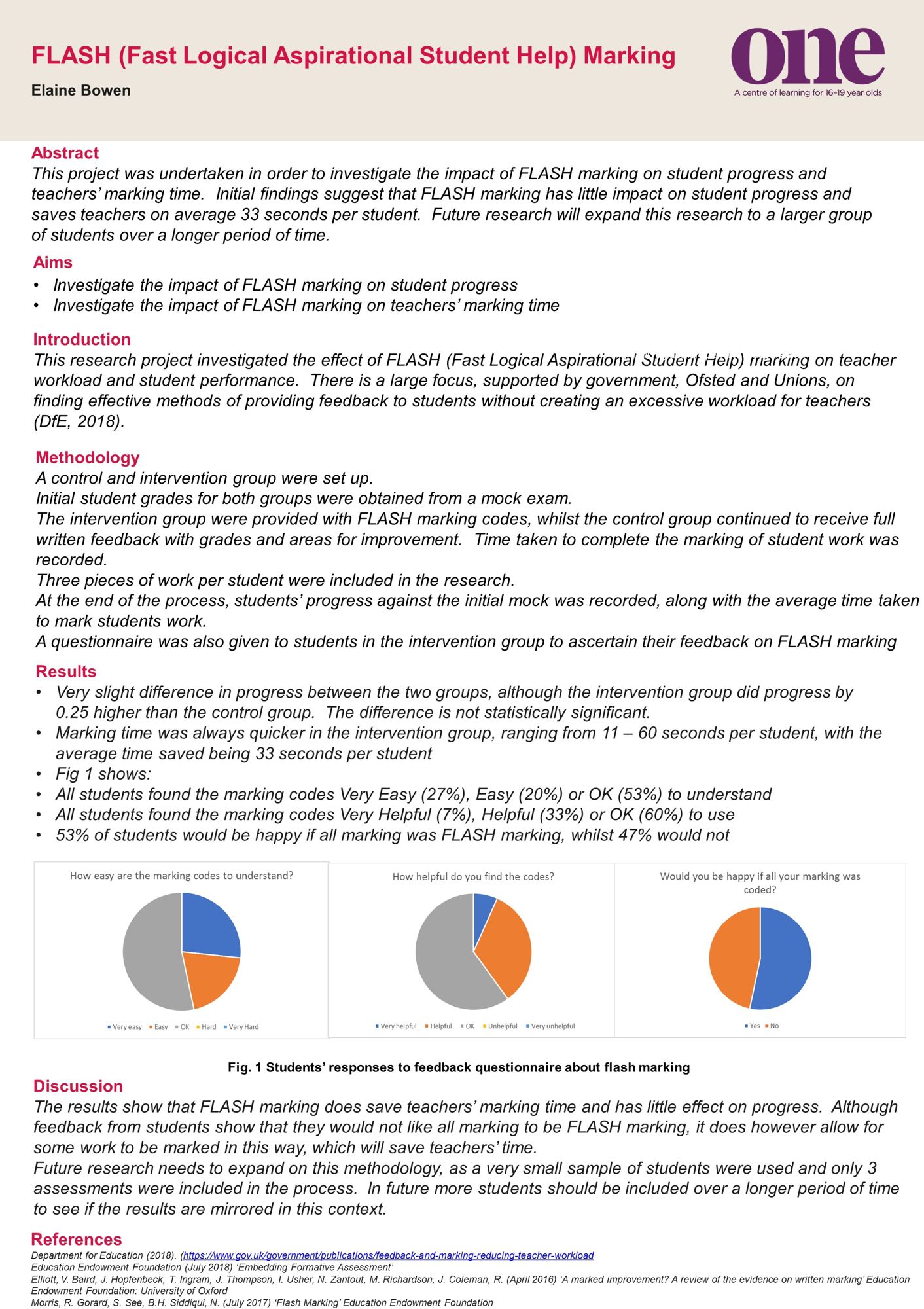How Effective is FLASH Marking?
One will be conducting a research project to investigate the effect of FLASH (Fast Logical Aspirational Student Help) marking on teacher workload and student performance. There is a large focus, supported by government, Ofsted and Unions, on finding effective methods of providing feedback to students without creating an excessive workload for teachers (https://www.gov.uk/government/publications/feedback-and-marking-reducing-teacher-workload)
The method being investigated at One includes using skills-based comments in a code system which identifies areas students have excelled in as well as areas for improvement. It is anticipated that the ‘FLASH’ marking will provide effective feedback to ensure student progress whilst also helping teachers to mark more efficiently and reduce marking workload.
The effectiveness of FLASH marking is currently also being investigated in a large-scale project financed by the Education Endowment Foundation
(https://educationendowmentfoundation.org.uk/projects-and-evaluation/projects/flash-marking/)
Elaine Bowen (Research Champion; elaine.bowen@suffolkone.ac.uk)
Project update - February 2019
FLASH marking using a coding system has now been implemented for the intervention group for a six week period. Marking time has gone down considerably as a result compared to the control group.
A questionnaire will (Studen questionnaire on FLASH marking.docx) be used after February half term to ascertain students' feedback regarding the coded marking.
Any impact on assessment outcomes will be determined by comparing standardised tests and internal examination results of these groups.
Elaine Bowen

Project update - May 2019
The research project has now finished and results have been analysed. Findings show that there is very little different (not statistically different) in student progress between the control and intervention group.
Marking time is reduced within the intervention group who received FLASH marking. This saved teachers on average 33 seconds per student.
Student feedback on FLASH marking shows that all students found the marking codes either Very Easy (27%), Easy (20%) or OK (53% to understand) and they all found them either Very Helpful (7%), Helpful (33%) or OK (60%) to use. Although only 53% of students would be happy if all marking was FLASH marking, whilst 47% would not. As a result, FLASH marking can be used within the teachers’ marking toolbox, but cannot be the sole method used.
Future research needs to expand on the aims and methodology of this research, as only a very small sample of students were used and only three assessments were included in the process. In future, more students should be included over a longer period of time to see if the results are mirrored in this context.
Research poster







